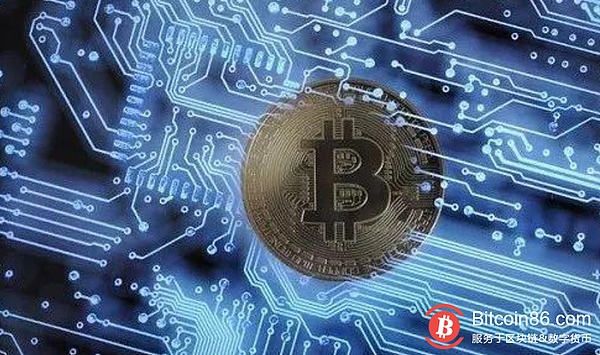German experts: Bitcoin is a major carbon emitter, mining energy consumption far exceeds that of large European cities.

Bitcoin is a virtual product of computer networks
Christian Stoll, a researcher at the Technical University of Munich (TUM), said: "In order to improve the ecological balance, there may be more Bitcoin 'mines' linked to renewable energy."
- The road is blocked and long, Libra project leader Chang Wen responded to all questions
- Libra Director David Marcus: Users don't have to believe that we will attend the hearing this month.
- $14,000 sold BTC Novogratz regretted "BTC will rise to $20,000"
However, even if you don't use Bitcoin, a search on Google will consume 0.3 watt-hours. In other words, if you search 20 times on Google, it is equivalent to using energy-saving lamps for 1 hour. At present, the global use of the Internet results in more than 33 million tons of carbon dioxide emissions per year, which is the sum of airborne CO2 emissions from the entire aviation system in Germany.
Every time you click the mouse, it is a huge energy consumption for the computer. In 2018, all power plants in Germany, as well as industrial and private power generation facilities, produced a total of approximately 649 TWh of electricity. Among them, 55 terawatts were sent to the power supply system required by the Internet.
Or let's take a city example to illustrate: In most of the data centers in Frankfurt, Germany, network systems use about 20% of the city's electricity, more than the Frankfurt airport's electricity consumption. Frankfurt Airport is the largest in Germany and the fourth largest airport in Europe.
Therefore, the ecological protection results of the communication information system are quite bad. There is therefore an urgent need to rethink or adopt sensible alternatives. Especially in the current period when the digitization process has just begun to accelerate.
Because of the high cost of cooling systems, it is not surprising that server operators are actively looking for meaningful alternatives. In the future, it is possible to use water instead of air to cool the server, and the waste heat generated at that time may also be utilized.
In addition, IT giants are gradually moving their large server farms to the more favorable northern regions. Google, Facebook and Apple have invested mainly in Iceland and Scandinavia. Because there is space, the experts and modern digital infrastructure needed, there is also low-cost electricity, including some electricity suppliers from sustainable sources such as wind, solar and hydropower. Most importantly, the climate in the region is cold and there is no need to use expensive air conditioning cooling systems.

The use of liquid cooling technology in data centers is becoming more common today, and liquid cooling technology is used in data centers using Chilled Water Cooling Room Air Treatment Units (CRAHS). The pipeline distribution, valves, joints, elbows, etc. are basically the same as the liquid cooling server. The biggest difference between a data center that uses liquid-cooled cooling and a data center that uses a liquid-cooled server is that the liquid in the cooling server is typically within a few inches of the IT equipment.
Reducing energy consumption is one of the most attractive aspects of servers that use liquid cooling directly. Data centers that use air-cooling technology require lower ambient temperatures to compensate for unintended air around the cabinet and to address the inefficient cooling of internal components of the computer. This is a "safety factor" that ensures proper cooling, minimizing the chance of thermal overload leading to a hard shutdown and protecting the server from damage.
In contrast, liquid cooling captures the heat generated by the computer directly from the source (core processing unit, graphics processing unit, memory module), eliminating the need for a safety factor. Therefore, using a higher temperature liquid will allow the server to operate under optimal conditions and will reduce energy consumption compared to servers that use air cooling.
Increasing the temperature of liquid cooling has a double advantage. First, when using a vapor compression cooling technique, an increased water supply temperature (evaporator temperature) can reduce compressor power. Second, due to the higher temperature of the cooling liquid, aggressive savings strategies can be used to minimize or eliminate the need for vapor compression cooling (eg, a chiller). Depending on the temperature of the liquid selected, the liquid temperature can be maintained using only a cooling tower or fluid cooler. In some cases, vapor compression equipment can be completely eliminated, reducing the primary cost and space requirements. (China Xiaokang Network)
We will continue to update Blocking; if you have any questions or suggestions, please contact us!
Was this article helpful?
93 out of 132 found this helpful
Related articles
- CEO of Kraken Exchange said or due to Tether fraud off USDT
- BTC network bubble index hit a new high this year, but OTC inflow rate is still strong
- Bitcoin prices jumped to around $14,000 and futures shorts were burst
- Bitcoin is approaching $13,000, and analysts say new funds are still not entering the market and will continue
- Bitcoin skyrocketed 20% in the night and approached $14,000!
- Up and down fluctuations of 3,000 bitcoin long and short double explosions appear again
- $138 billion in historical days or tips for iron tops! Predicting BTC's expected decline





